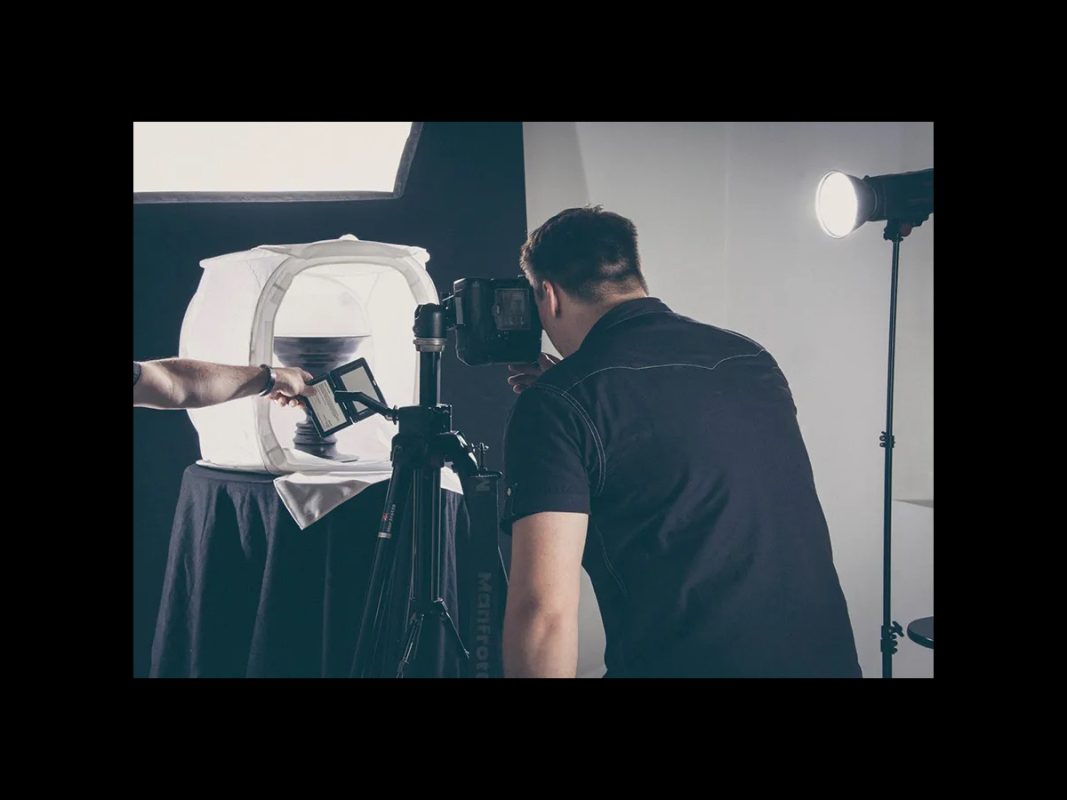“First the visionary, then the judge.”
The demand for the product or service will increase only when the customer is attracted. In eCommerce, the buyer needs to see the product directly. The buyer only sees the image you have provided on your e-commerce website.

“A good picture is worth over a hundred words of content.”
So, if you give an excellent picture without writing an extensive description, the buyer can easily understand what the product is like.

So, in the e-commerce business, the only way to give the buyer a good idea about the product is through image. If we look at Amazon, Alibaba, eBay, Rakuten, Flipkart, etc., we can see what kind of images they use because they are the pioneers of this business.
What refers to Product Photography?
Product photography is a type of photography that involves photographing products to display, promote, and highlight certain product features.
Today, product photography is most commonly utilized in e-commerce stores or on social media.
History of Product Photography
Before the age of the internet, Product photography didn’t exist.
We can trace product photography back to when photography and advertising met, which is most often considered the early 20th century.

Product photography was most often used in military advertising catalogs during this time. These catalogs were different from competitors because they provided the specifics of the products being sold and provided customers with images of what they would be purchasing.
From here, fashion and textile manufacturers started using product photography. Still, we didn’t notice product photography enlarge its popularity until 1909 when Conde Nast acquired Vogue and started branding products in the pages of its magazine.
Product Photography Today
You no longer see product photography on the turns of magazines. Product photography is everywhere, from the ads you see when scrolling on social media to the clothing you purchase when browsing your favorite shops. Going anywhere without seeing product photography in some way, shape, or form is challenging.

Sometimes, you’ll see that product photography is bare-bones, highlighting only the product’s most important features (i.e., tech products). In other cases, product photography can contain styling, which you’ll often see used in fashion products or home decor items.
Product photography is also commonly represented as commercial photography; moreover, be careful not to conflict with commercial real estate photography.
E-commerce Product Photography – Things to Know to Succeed
E-commerce product photography is attractively taking pictures of products to sell to customers in an e-commerce business.

The main difference between general and product photography for e-commerce businesses is its presentation style. 90% of the information flow in our brain is visual matter. Hence, photography has a prime position as attention-grabbing visual content in eCommerce.
Quality product images increase a brand’s acceptability to customers. The survey found that 93% of customers prefer product images when making e-commerce purchases.
Visual Appeal in Online Shopping
Should Brands prioritize product photography over social media content? Product photography and social media content are essential components of a brand’s marketing strategy, and their prioritization might vary based on the brand’s goals, target audience, and overall marketing strategy. Both aspects contribute significantly to a brand’s online presence and can complement each other to enhance overall marketing effectiveness.
Product photography is crucial in showcasing a brand’s products or services. High-quality product images can attract attention, highlight product features, and influence purchasing decisions. Compelling and visually appealing product photography can significantly impact a customer’s perception of the brand’s quality and value.

On the other hand, social media content is decisive for engaging with the audience, building brand awareness, and fostering relationships. Contents which on social media platforms such as Instagram, Facebook, TikTok, and others helps brands connect with their followers, share stories, announce promotions, and engage in conversations. Visual content, including product photos, videos, infographics, and more, can grab attention and encourage interaction with the audience.

Rather than prioritizing one, brands should aim for a balanced approach that integrates high-quality product photography and engaging social media content. A synergistic strategy that combines captivating product images with compelling social media posts can create a more impactful and comprehensive brand presence.
Here are a few considerations for brand.

Quality Product Photography
Investing in high-quality product photography is crucial. Clear, well-lit, visually appealing images can make products more attractive to potential customers.
Engaging Social Media Content
Create diverse content on social media platforms that showcases products and engages the audience through storytelling, user-generated content, behind-the-scenes glimpses, interactive posts, and more.
Consistency and Brand Cohesion
Ensure that product photography and social media content align with the brand’s overall message, tone, and identity. Consistency aids in building brand recognition and trust.
Audience Engagement
Engage with the audience on social media by responding to comments, conducting polls, running contests, and sharing user-generated content. This interaction can strengthen customer relationships and build brand loyalty.
The ideal approach is to balance high-quality product photography and engaging social media content, recognizing that both elements contribute significantly to a brand’s success in the modern digital landscape. Tailoring strategies based on the target audience’s preferences and behaviors can help optimize the impact of the brand’s product visuals and social media interactions.
E-commerce Image Optimization
Photo editing is vital in editing the visual appeal and quality of product images for e-commerce stores. Here are several reasons why it’s important:

Attractiveness
High-quality, well-edited images attract customers’ attention and create a positive first impression. Straightforward, appealing visuals can entice products and encourage potential buyers to explore further.
Consistency
Editing ensures consistency across all product images, maintaining a cohesive look and feel throughout the store. Consistency helps in branding and makes the store look more professional.
Highlighting Features: Editing allows for highlighting specific product features or details. By adjusting brightness contrast or focusing on particular elements, you can showcase the product’s unique selling points more effectively.
Color Accuracy Correcting colors ensures that the product images accurately represent the actual items. This is crucial as customers rely on these visuals to make purchasing decisions, and accurate colors build trust.

Removing Distractions
Photo editing helps eliminate distractions, such as background clutter or imperfections on the product itself. A clean, clutter-free image helps customers focus on the product itself.
Sizing and Cropping
Images need to be appropriately sized and cropped for different platforms and devices. This optimization ensures the images load quickly and appear well on various screens.
Brand Image
Consistently edited and visually appealing images contribute to a positive brand image. They focus on professionalism and attention to detail, which can protect the brand’s overall perception.
Competitive Edge
In a crowded e-commerce market, well-edited images can give a competitive edge. They make products stand out amidst similar offerings from competitors.
Improved Conversions: Studies have shown that high-quality images lead to higher conversion rates. When customers can see what they’re purchasing, they’re more likely to buy.
Adaptation to Marketing Needs: Edited images can be more adaptable for various marketing purposes. They can effectively be used in social media campaigns, advertisements, and other promotional materials.
Overall, photo editing for e-commerce stores is essential to create visually appealing, accurate, and persuasive product images that drive sales and improve the overall shopping experience for customers.
Photo Retouching for Online Retailers
Different types of e-commerce photography by product
Five types of product photography trending in e-commerce business we are constantly seeing.
Product only
“In this category, the product is presented very reliably. 75% of the image background remains white to ensure maximum product visibility. All distractions between the customer and the product photo are removed.
This type of photography is mandatory for selling Amazon products. Click on this link to view Amazon’s Product-only photographs.
This photography method suits anyone involved in e-commerce with any product. It is ideal for design-oriented product sales.”
“Lifestyle
This photograph captures a practical image of a product. The customer begins to envision themselves in place of the user in this picture. Through this type of photography, the product’s unique features are highlighted, encouraging customers to purchase it. An invisible connection is established between the customer and the image.”
Ideal for and why:
- People who sell clothing, jewelry, cosmetics, and similar products.
- Unique concept products.
- Decorative items or artfully crafted products.
- For all products, knowing the usage method is crucial for the product.
Hero
In this method, the product is presented compellingly. Its size is usually larger than life from lifestyle product images. Text is often added alongside the image.
Ideal for and why:
- Various types of product suppliers and businesses want visitors to their websites.
- For use in sales and marketing events.
- As banners on social media platforms.
360-degree
This method lets customers view a product from various angles in just one image. The image can automatically rotate at different angles. In many cases, there’s also the option for manual rotation.
The conversion rate for this type of image is significantly higher. To experience the 360-degree view, one can visit the provided link.
Ideal for and why:
- For products where each angle significantly influences the purchase decision, such as mobile phones.
- For products where design plays a crucial role in the purchase, like shoes.
- For more oversized items, such as appliances or equipment.
GIF or Video
Animated product photography can be used in the following scenarios:
Displaying differences: Animated photography can prominently display differences in products such as color, size, or notable features. It helps highlight the uniqueness and distinctiveness of the product.
In marketing and promotion: Animated photography can be used in marketing and promoting products to attract viewers and gain their approval.
Explaining the product: For products created for specific purposes but where customers are not fully aware of their characteristics, animated photography can be an effective promotional method.
Animated photography mentions the unique features and uniqueness of the product, attracting customers and creating awareness about the product.”
Is it best to do post-processing after photography?
Professional photographers engage in post-processing to refine photographs further. For instance, a wedding photographer might post-process at least ten photos, enhancing them significantly for display purposes.

Post-processing is done to ensure that a family gets the most refined moments captured in a photograph. On the other hand, I have a photographer friend who does nature photography and refrains from excessive editing. They only tweak color tones slightly to make the picture more appealing. At first glance, one might not even realize that post-processing has been done. AA good photograph, primarily if it’s intended for the customer, requires a good lens and proper post-processing. Nowadays, many people take photos in JPEG format and edit them, often mistaking editing for applying several software filters. Observing these practices might lead to a misconception about the essence of post-processing. However, we must understand the true meaning of post-processing in photography. Today’s photography isn’t limited to the camera, lens, light, and angles; it involves much more.

